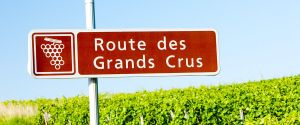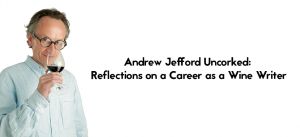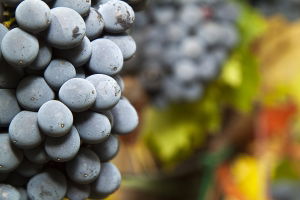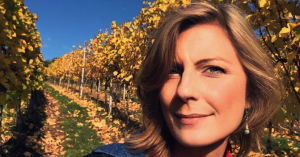BLOG
study trip
Sadly, time has marched on, since the fantastic Bourgogne Immersion Trip I took with the Wine Scholar Guild lead by Andrew Jefford, October 23 – 28, 2016. Everyone on the trip was definitely a “wine nerd” but the group was composed of a mix of wine industry professionals, wine students of all levels that had “day jobs” and just wine appreciators. I had been on a few wine trips previously that were organized by friends or non-winegroups like Backroads (biking and wine). However, I had never gone on such a blockbuster, action-packed wine trip as this one. So for future participants here are 5 items to keep in mind so you have an incredible trip.
Meeting Andrew Jefford today could easily lead one to believe that he was born knowing enormous volumes of information about the wines of the world, and has always been able to explain them in the manner of a poet laureate. As the leader of a 2016 Wine Scholar Guild study tour of Southwest France, his presentation (with global parallels) to a small but diverse group of educators and wine professionals was quite natural, charming, articulate, insightful, and generous.
Group feedback about Andrew includes these admirable qualities: knowledgeable about local context, well prepared, flexible and adaptive, clear "voice" (speaking and writing), exceedingly patient, gifted at capturing the essence of ideas with beautiful words, an amazing ability to write great tasting notes in record time, erudite yet accessible. In short, it is a privilege to be tutored in person while traveling with Andrew Jefford.
In 2024 Wine Scholar Guild proudly announced the Albert Sheen Memorial Scholarship in memory of our dear friend and dedicated wine traveler, Albert Sheen. The scholarship application invited applicants to discuss the challenges of climate change in Bourgogne. We received a number of truly exceptional submissions and thank all our participants for their in-depth essays and perspectives. The selection committee has selected Marek Zelewski and is pleased to share his winning essay below. Marek has been awarded a seat on our upcoming Bourgogne Masters Immersion taking place in May 2024.
Albert would have been honored to witness the positive energy and enthusiasm that this scholarship has ignited.
A medium-acidity, off-dry, full-bodied white with aromas of baked yellow apple, starfruit, mango and ripe pineapple, pronounced notes of lemon curd, vanilla and pie crust, paired with elevated alcohol lingering on the palate. While it sounds delicious if one’s looking for a fun wine substitute for a tiki cocktail, hardly anybody would place this Chardonnay on the map anywhere close to Burgundy. However, given the predicted increase in its average temperatures (1), fast forward to 2050 and it could well be a glass of Mâconnais. While certainly not great for those taking blind-testing exams, the consequences of climate change for the French wine industry will be way more far-reaching.
Matt Kirkland was an attendee of the WSG’s first Study Trip to Tuscany with Jane Hunt, MW. Here, he shares some of the insights he gleaned from the trip.
Quality in wine can be assessed based upon balance, length, intensity, and complexity (and typicity when not tasting blindly). As the workhorse grape of central Italy, Sangiovese had a checkered history relative to quality. It is a high acid grape, with relatively high tannins; and quality demands a balance of these structural components. The goal of this essay will be to discuss the acid/tannin balance, its impact upon quality, and the implications for “mouthfeel” of the resultant wines. The harmonious balance of quality can be achieved with pure Sangiovese (Brunello de Montalcino or some Chianti’s, or with blends as in Chianti or the “Super Tuscans”); the key is taming the interplay of tannin and acid on the palate. The journey through Tuscany is a delectable discovery of vinous diversity, unified by the grape.
“In the bad old days, Sangiovese tended to be overproduced which accentuated its tendency to exhibit high acid and unripe tannins… Sangiovese’s dominant viticultural characteristics are that it can vary as much as Pinot Noir in its sensitivity to place and that it ripens relatively late.” Jancis Robinson, www.jancisrobinson.com/learn/grape-varieties/red/sangiovese
We are thrilled to announce that Mary Kirk will be joining the WSG team as our Community and Membership Manager.
Mary has been part of the WSG family since its beginnings and we are delighted to have her come onboard in this capacity as we know that she will be a great addition not only to our team, but more
“Andreeeeea! There is no plane from Napoli to Ancona!” This was the incredulous cry that I heard from my Campanian friends when I told them how I was leaving their beautiful region to visit Marche. They were sure that when I arrived at the terminal, that what I thought was going to be a plane would, in fact, turn out to be a bus. They were so adamant that no such flight existed that even I began to doubt the authenticity of the travel itinerary I had received. My relief was therefore clearly visible when I was able to check in for my evening flight to Ancona.
Autumn in Champagne is a spectacular time to explore the region. The countryside and vineyards are abounding in rich palettes of color and the intoxicating fall fragrance instills a unique sensorial experience. Champagne is like laughter as it fills my senses with joy, especially when the cork pops and the bubbles burst with song!
The educational experience created by the Wine Scholar Guild is a first class escapade! The inception of our tour and taste of Champagne, guided by Master of Wine, Essi Avellan, brought us full circle through the entire region with a sprinkling of the styles between Houses, Growers and Coopératives. Our adventure began with an introduction to the infamous Champagne Houses of Ruinart and Roederer.







